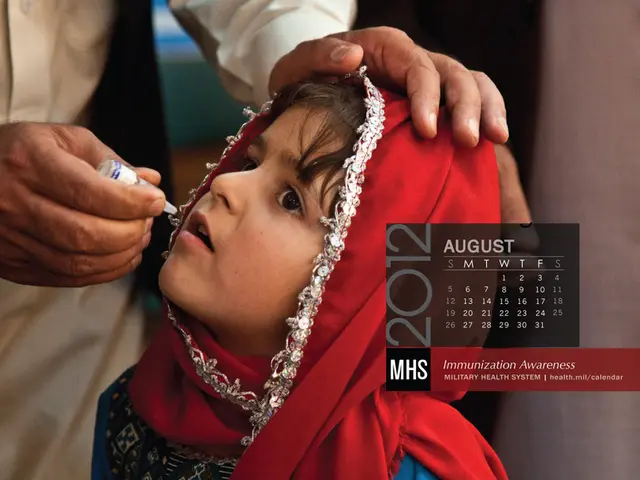Connection between Breast and Ovarian Cancer: Shared links and Risk Factors
Breast and Ovarian Cancer: The Genetic Link Explored
Got breast cancer and wondering about ovarian? Let's dive into the connection between these two ladies' health issues, shall we?
Turns out there's a solid relationship between breast and ovarian cancer, often stemming from genetic factors. Yep, those mutations in the BRCA1 and BRCA2 genes are to blame here.
You see, breast and ovarian cancer share some common genetic risk factors. Folks who carry those risky genetic loot may be at a higher risk for both of these cancers.
But age ain't nothing but a number when it comes to these diseases. Overweight or obesity, never giving birth, and not breastfeeding can also increase the chances. You might be able to control some of these risks, like keeping it Flyweight.
Breast Cancer: What's the Ovarian Connection?
Medical professionals have found that those who've battled breast cancer are at a higher risk of developing ovarian cancer. And what's surprising is that the risk increased due to genetic mutations BRCA1 or BRCA2 – it's not just the disease itself.
Yep, if you've already had breast cancer, you're roughly two times more likely to develop subsequent ovarian cancer.
Similarly, ovarian cancer survivors are at a 1.6-fold increased risk of breast cancer. However, the risk varies over time since the first diagnosis.
And, there's a reciprocal risk for ovarian cancer too – it can boost the chances of developing breast cancer. This might be due to genetic mutations again.
Other Shared Risk Factors, Explored
Besides the genetic mutations in BRCA1 and BRCA2 genes, here are other risk factors shared by breast and ovarian cancer:
- Family history among both cancers
- Old age, with ovarian cancer mostly happening in women over 40 and breast cancer in those ages 55 or above
- Overweight or obesity
- First child over 30
- Never having children
- Not breastfeeding
- Hormone therapy after menopause
A whopping 20-30% of families with ovarian and breast cancer have BRCA1 gene mutations, while around 6-10% carry BRCA2 mutations.
Reducing Risk: Can It Be Done?
Time to talk about risk factors we can control:
- Weight: Restricting the pounds can help reduce the risks of both breast and ovarian cancer. Obesity may lead to higher estrogen levels, and estrogen loves growing these cancers.
- Exercise: Regular exercise plays a role in lowering breast cancer risks. There's limited evidence suggesting it may help with ovarian cancer, too.
- Alcohol: A lackluster liver should be your goal to reduce breast cancer risks. But, as health experts advise, moderation is the key.
- Contraceptives: There's a debate around oral contraceptives: they might lower ovarian cancer risks but slightly increase the chance of breast cancer. Discuss concerns with your doc!
Outlook: Spirit Stays Willing, And So Does the Fight!
A 2020 study suggests people with both primary breast and ovarian cancer have a decent 5- and 10-year survival rate, mostly around 90%. Longer intervals between the two diseases often lead to better prognoses, but ovarian cancer following breast cancer tends to involve later-stage diagnosis, which can affect survival.
Various factors may influence a person's outlook. If you want to know more about your personal outlook, chat with your healthcare team.
When to Sound the Alarm 🚨
Keep an eye out for signs and symptoms of breast or ovarian cancer. If you, or a family member, have a history, stay especially vigilant. Early diagnosis and prompt treatment are essential for a good prognosis.
Resources for Further Reading
If you're in the mood for more evidence-based information, visit our hub dedicated to cancer. It's jam-packed with trustworthy resources to help you navigate your journey.
FAQs
Lemme give you the rundown on other cancers related to ovarian cancer, and what risks women with breast cancer might face.
- Ovarian cancer survivors might face an increased risk of these cancers:
- Breast cancer
- Bladder cancer
- Bile duct cancer
- Colorectal cancer
- Acute leukemia
- Melanoma of the eye
- If breast cancer metastasizes, it may spread to the ovaries, though it's relatively uncommon. Usually, it occurs in advanced breast cancer, particularly hormone receptor-positive tumors or in people with BRCA mutations.
- High-risk factors for ovarian cancer include:
- BRCA1 or BRCA2 gene mutations
- Family history of ovarian, breast, or colorectal cancer
- Lynch syndrome
- Endometriosis
- Never been pregnant
- Late first pregnancy
- Age over 40 years
- If you're a manopausal woman or have a history of breast cancer, be aware of the increased risk of developing ovarian cancer due to genetic mutations in BRCA1 or BRCA2.
- The risk for both breast and ovarian cancer can be elevated by age, overweight or obesity, never giving birth, not breastfeeding, and use of hormone therapy after menopause.
- Weight management, regular exercise, moderation in alcohol consumption, and careful consideration of oral contraceptive usage are some factors that may help reduce the risk of breast and ovarian cancer.
- The survival rate for both primary breast and ovarian cancer is promising, with a 5- and 10-year survival rate of around 90%, but early diagnosis and prompt treatment are crucial for a favorable prognosis.
- Other cancers that ovarian cancer survivors might face include breast cancer, bladder cancer, bile duct cancer, colorectal cancer, acute leukemia, and melanoma of the eye.
- Breast cancer can occasionally spread to the ovaries, especially in cases of advanced breast cancer, hormone receptor-positive tumors, or individuals with BRCA mutations.








